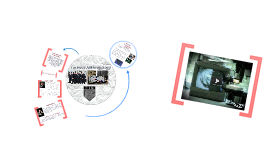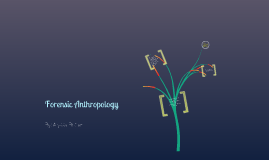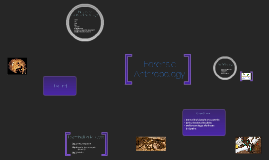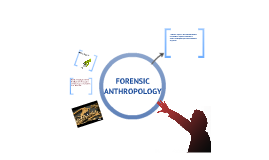Forensic Anthropology
Transcript: Forensic Anthropology Salary: In general forensic anthropologist make $54000 a year. A FA with one to four years of experience earn between $39,600 and $58,262 per year. Forensic anthropologists who possess five to nine years of experience earn $30,000 to $73,698 per year. Type Complete-broken all the way through Incomplete-crack, not complete break Comminuted- Piece not with bone Linear-pressure on skull, soft blunt weapon Stellate- Star shaped piece missing, hard, blunt weapon Depressed- associated with stellate Broken Hyoid- if not adult, not fused, may indicate strangulation Timing-Linear cracks do not cross prior cracks, indicate attack order By looking at the fracture marks, it will help a forensic scientist deterimne COD and can help with building a case. There are factor that help determine death that they look at: Some environmental factors from Tennessee for example include: 3 weeks -- articulated bones 5 weeks -- some scatter, some articulated 4 months -- disarticulated, within 10' circle 7 to 8 months -- most bones w/in 10' circle and all w/in 20' 1 year -- small bones missing, complete disarticulation 2 to 4 years -- some bones broken, scatterd 40', some large bones missing 12+ years -- bone rot; partial burial* 15 to 20 years -- no surface evidence * partial burial from leaves, storms, erosion from shallow burial http://www.forensicscience.net/forensic-anthropology-careers http://www.anthro4n6.net/forensics/ Forensic anthropology By Bradley J. Adams http://whyfiles.org/192forensic_anthro/3.html http://www.liberalarts.txstate.edu/about/news/anthronews2009/earlydedication/contentParagraph/0/content_files/file0/Bones.jpg http://library.thinkquest.org/04oct/00206/images/5_60_skull.JPG http://www.devonkarst.org.uk/Bone%20Caves%20of%20Plymouth%20&%20District/image95B.JPG What to look for in figuring gender The American board of Forensic Anthropologist has a certification program that will help a Forensic Anthropologist is certified it will open up more job opportunities. To be certified the board looks at experience, training, education, and achievements. The candidate must also pass an exam that covers theory and practice. Once certified the Anthropologist must stay current and keep earning education units. Environmental Factors Male Female General Size: Large Small Architecture: Rugged Smooth Supraorbital Margin: Rounded Sharp Mastoid Process: Large Small Occipital Bone: Muscle Lines and Protuberance Marked Lines not marked Glabella: Bony Flat Gonial Angle: Squared Wide Angle Palate: Larger, Broader, Small Occipital Condyles: Large Small Excavation Over View Forensic Anthropologist are often called to help identify bodies after natural disasters and recovering evidence at crime scenes because of their knowledge and techniques in which can help recover evidence. They can determine how a person died, and get a variety of information from the human remains. They are divided into two categories; those in the academic field and those in the applied field. Academic forensic anthropologists work in universities. They teach classes regarding forensic anthropology. Those who work in the applied field work with law enforcement, coroners, or medical examiners. Sources A forensic Anthropologist uses standard archaeology procedures and tools when they are recovering bones or other human remains from a crime scene. A forensic anthropologist also has developed techniques in excavation that help them recover remain without disturbing any possible evidence. Certification Fracture Chart Education Education: Entry Level-The first step is to obtain a bachelor’s degree in anthropology. Undergraduates should get a non-specialized anthropology degree. Undergrads should also take a variety of classes including: archaeology, cultural and physical anthropology, and others such as genetics, chemistry and anatomy. Advanced position- AS well as obtaining education in the paragraph above a great forensic anthropologist also should have a good grasp on osteology (bones), dentition (teeth), and ethnobotany (plant remains and pollen). They will have also acquired a master’s/ Ph.D. in forensic anthropology. Salary

















